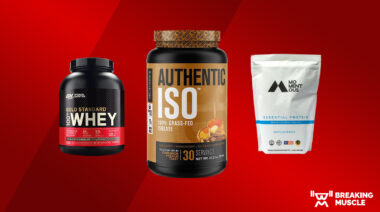It’s always good to know what attributes to work on the most in order to improve performance. In a recent Journal of Strength and Conditioning Research study, investigators sought to find associations between common field sport tests and a host of body measurements, strength tests, and biomechanical factors.
Study Design
Thirty rugby players were chosen to be tested, although the researchers believed the results to be applicable to any field sport. I think the results apply to pretty much any athlete tasked to move his or her own body around.
The rugby players had a computer scan their bodies to create a digital model. Based on that model, a huge assortment of measurements were taken, such as bodyweight, height, circumference, length, and other data. The athletes were also tested for their one-rep-max (1RM) strength on squats and deadlifts, as well as their power output on jump squats and a fast deadlift. Once all of the data was collected, it was put together to see which factors affected sprints (from five to thirty meters), vertical jump, and change of direction the most.
Bigger Isn’t Better
In what might seem to be a counterintuitive result, bigger muscles were negatively correlated with performance in all of the tests. It didn’t matter what muscle groups were chosen, from forearms, to arms and chest, to the muscles of the thighs and calves – bigger muscles made the athletes slower, less agile, and less powerful on their vertical jumps. In fact, the more important the muscles were for each test, the worse the performance was as the subjects got larger.
There’s one good reason for these results. When moving around, relative strength (when compared to the athlete’s bodyweight) and power are the most critical factors. Although the athletes got stronger as their muscles grew, they also got heavier at a disproportionate rate. Because all of the body measurements taken were associated strongly with bodyweight, performance was reduced even though the weight room numbers were going up.
Relative Strength Wins the Day
To further drive this point home, when relative strength was measured by the 1RM performance of the squat and deadlift exercises, and then divided by the athlete’s bodyweight, the results were exactly what you’d expect. The greater the relative strength, the better performance. In fact, performance was more significantly correlated to relative strength than it was to body size.
But how much did the studied factors actually impact these tests? The researchers stated that for the vertical leap and thirty-meter sprint, as much as ninety percent of performance variation can be explained by the collected data. In general, relative power, average and peak power outputs, and velocity correlated with better field performance. In other words, the heavier and faster you can lift at a given bodyweight, the better you will perform in field tests.
Research Limitations
The researchers admit that the five-meter sprint and the agility tests were not as well explained by the collected data. They suggested that more advanced body composition measurements might help with this test, but I suspect otherwise. The five-meter sprint and change of direction tests used were short and had high technical requirements to perform well. I suspect that lack of technique on these tests could explain virtually all of the remaining uncertainty.
Of course you want skill for tryouts and for better performance on the field. But in the weight room, focus first on getting to the appropriate bodyweight for the position you play, and from there, getting as strong as possible without gaining much weight.
References:
1. Paul Swinton, et. al., “Regression Models of Sprint, Vertical Jump, and Change of Direction Performance,” Journal of Strength and Conditioning Research, 28(7), 2014
Photo courtesy of Shutterstock.






